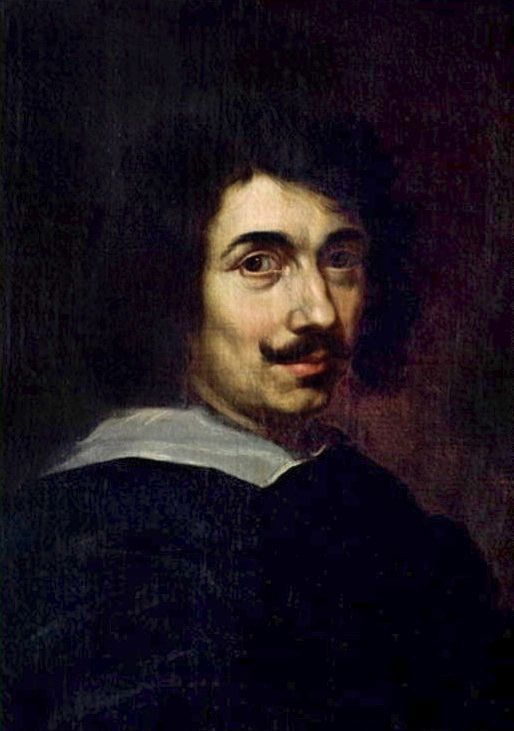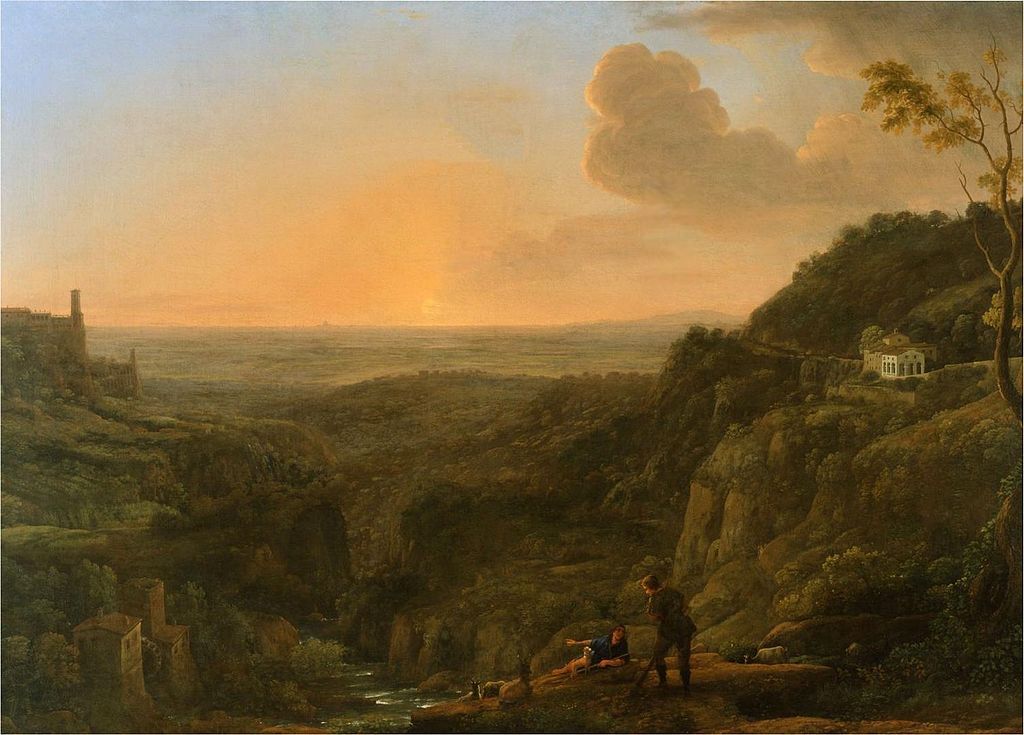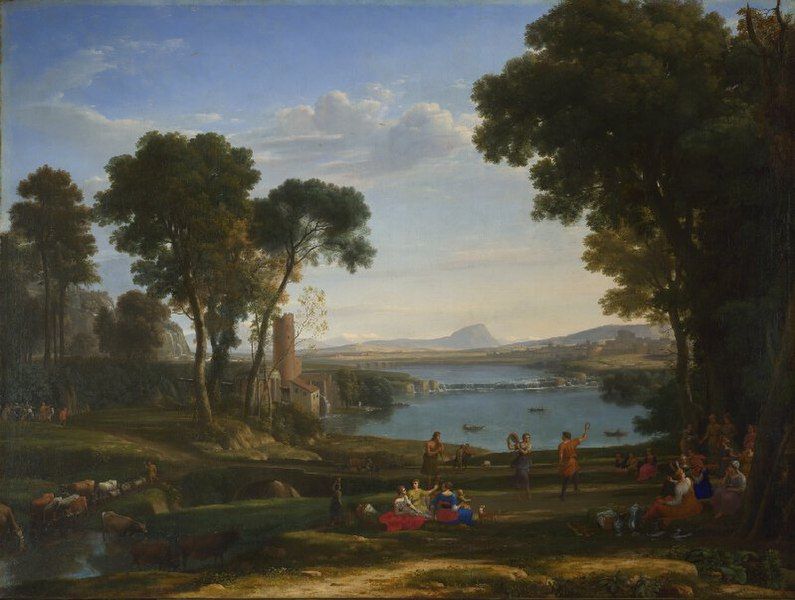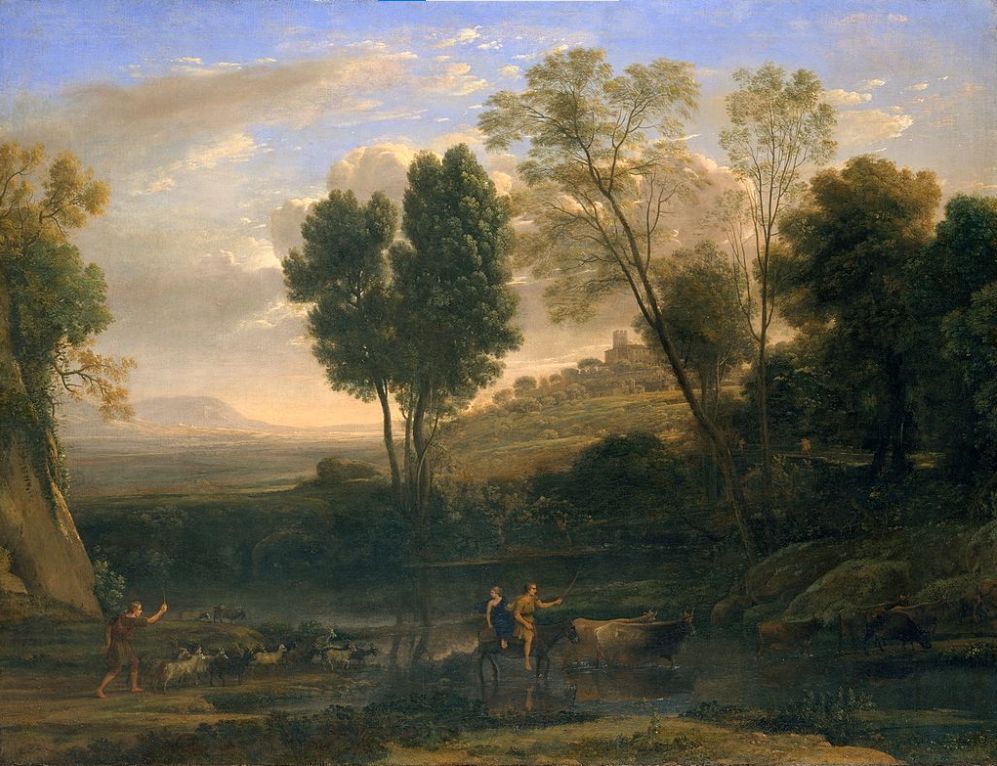Claude Gellée, commonly known as Claude Lorrain, is a renowned 17th-century French landscape painter whose name is often mentioned alongside Poussin. Although they worked in the same era and knew each other, Lorrain and Poussin had distinctly different personalities and artistic styles. While Poussin emphasized intellectualism, attracting patrons such as intellectuals, lawyers, and officials, Lorrain was known for his elegant landscapes, appealing to kings and nobles across Europe.

Lorrain's early life was quite legendary. Originally trained as a baker in his hometown of Lorraine, he moved to Rome in his youth to become an assistant to a decorative artist, where he began learning painting. Except for a few years in the 1620s, he spent most of his life in Rome. He read Latin poetry through translations, but his landscapes left an indelible impression on Europeans. Lorrain is credited with creating the concept of the "classical landscape," which elevated Western landscape painting to a higher artistic form.

During Lorrain's time, landscape painting was not yet recognized as an independent genre, especially in Italy. However, Lorrain's work pioneered new ground in this field. European nobility, including Philip IV of Spain, eagerly purchased his paintings, leading to numerous forgeries of his work. To protect his art, Lorrain began recording his paintings in 1635 in a book known as the "Liber Veritatis," now housed in the British Museum.
Lorrain's landscapes possess an eternal quality, making it difficult to discern their novelty. They depict an idealized pastoral world, a recurring theme in European literature and art. His direct inspiration came from the countryside around Rome, the Campagna, which had previously not attracted the attention of artists seeking ancient ruins. Lorrain spent entire days in these vast, undulating, and desolate fields with his sketchbook, observing and recording the landscapes under various lighting conditions.

In Lorrain's works, ancient myths gain new life through his meticulous and idealized portrayal, offering a fresh reality. He masterfully handled light, capturing the interplay of light between the horizon and the viewer, reflecting off water surfaces, absorbed by stones, and filtering through the branches of oak trees, unifying the entire composition. Lorrain preferred the diffused light of morning and evening over the harsh midday sun, avoiding strong contrasts between light and shadow. This mastery of light connected him with contemporaries like Caravaggio, Bernini, Rembrandt, Vermeer, and Velázquez.
Lorrain's landscapes not only achieved artistic excellence but also profoundly influenced later landscape painters. His compositions often feature expansive foregrounds with trees strategically placed to one side or in other unobtrusive locations, guiding the viewer's eye along winding paths through subtly changing tones to a bright horizon. His innovation lay in his treatment of light, which was not just part of the scenery but the central element of his compositions.

Lorrain's success and artistic skills made him one of the most important landscape painters of his time. Despite lacking formal classical education, his works display extraordinary artistic talent and a deep understanding of nature. His landscapes are not merely depictions of natural scenes but intricate studies of light, color, and composition, reflecting his love for nature and dedication to art.
Claude Lorrain's artistic achievements lie not only in establishing landscape painting as an independent genre but also in his masterful handling of light and color, creating an idealized pastoral world full of poetry. His works are timeless pieces of art that offer a profound expression of nature and the human soul, marking an indelible part of art history. Through his paintings, we not only appreciate the beauty of 17th-century European landscapes but also understand the artist's profound grasp of light, color, and nature.